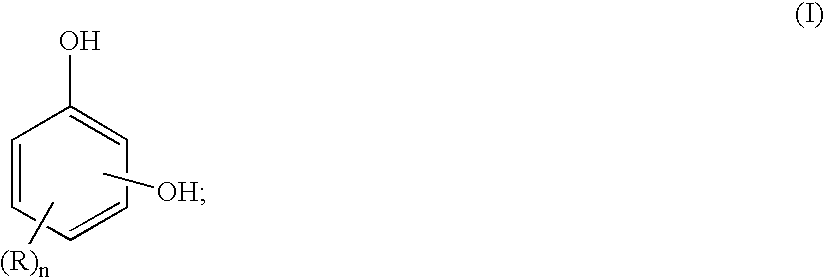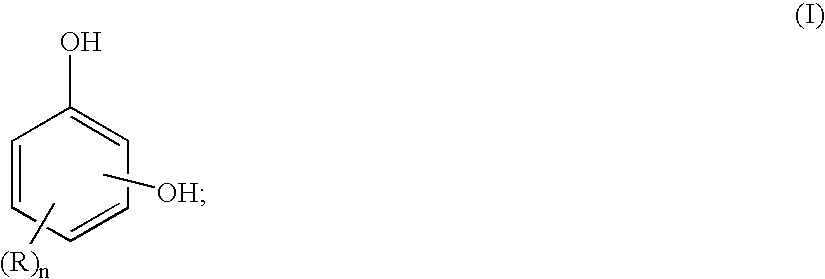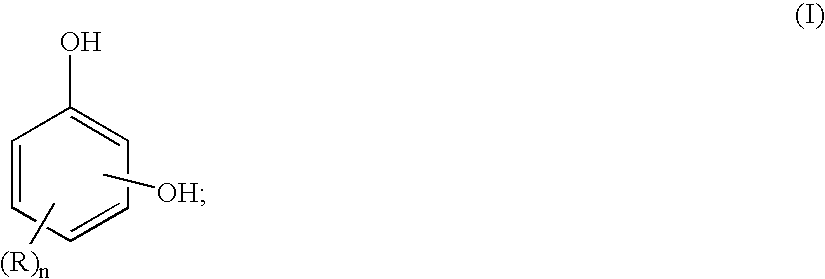Method of stabilization of dihydric phenols
a technology of dihydric phenols and stabilization methods, applied in the field of stabilization of dihydric phenols, can solve the problems of quality problems, discoloration of dihydric phenols, and lowering the commercial value of dihydric phenols
- Summary
- Abstract
- Description
- Claims
- Application Information
AI Technical Summary
Benefits of technology
Problems solved by technology
Method used
Image
Examples
example 1
[0054]A stock solution of 16 milligrams of ascorbic acid in 100 milliliters of water was prepared. 100 microliters of this stock solution was added to 1.0 gram (g) of MeHQ (control sample) contained in a round bottom flask. The resultant mixture was purged with nitrogen for about 5 minutes and then heated to about 160° C. for about 2 hours under a nitrogen blanket to obtain a melt of stabilized MeHQ. The APHA value of the melt of the stabilized MeHQ was measured. The results are tabulated in Table 1 below.
examples 4 to 8
, Comparative Examples 4 to 6 (CE-4 to CE-6)
[0062]To a glass reactor tube was charged bisphenol A (6.8 g), MeHQ (control sample, 3.7 g), transesterification catalyst (sodium hydroxide (11.91 micrograms) and tetramethylammonium hydroxide (135 micrograms)), both added combined as a solution in 50 microliter Milli-Q quality water), BMSC (20 g) and ascorbic acid or oxalic acid (amount as provided in Table 3, relative to MeHQ; added as a solution in 50 microliter Milli-Q quality water). In CE-4 no stabilizer was added and the MeHQ (control sample) was directly used for preparing the polycarbonate co-polymer. The reaction mixture was then purged with nitrogen. The reaction mixture was then heated to a temperature of 180° C. under atmospheric pressure. After maintaining the reaction mixture at this temperature for about 15 minutes, the reaction mixture was stirred and under stirring the pressure of the reaction mixture was reduced to 500 millibar. After about 45 minutes the reactor was hea...
PUM
| Property | Measurement | Unit |
|---|---|---|
| Length | aaaaa | aaaaa |
| Fraction | aaaaa | aaaaa |
| Thickness | aaaaa | aaaaa |
Abstract
Description
Claims
Application Information
 Login to View More
Login to View More - R&D
- Intellectual Property
- Life Sciences
- Materials
- Tech Scout
- Unparalleled Data Quality
- Higher Quality Content
- 60% Fewer Hallucinations
Browse by: Latest US Patents, China's latest patents, Technical Efficacy Thesaurus, Application Domain, Technology Topic, Popular Technical Reports.
© 2025 PatSnap. All rights reserved.Legal|Privacy policy|Modern Slavery Act Transparency Statement|Sitemap|About US| Contact US: help@patsnap.com



